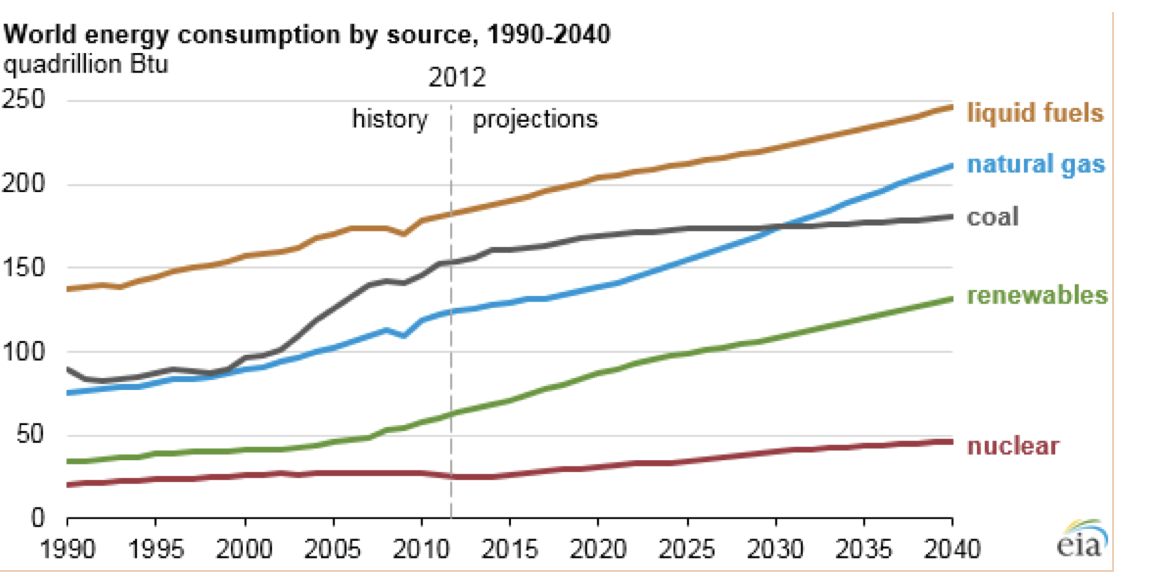July 2016, Vol. 243, No. 7
Features
EIA Projects 48% Increase in World Energy Consumption by 2040

The U.S. Energy Information Administration’s EIA International Energy Outlook 2016 (IEO2016) projects world energy consumption will grow by 48% between 2012 and 2040. Most of this growth will come from countries that are not in the Organization for Economic Cooperation and Development (OECD), including countries where demand is driven by strong economic growth, particularly in Asia. Non-OECD Asia, including China and India, accounts for over half the world’s increase in energy consumption over the projection period.
Concerns about energy security, effects of fossil fuel emissions on the environment and sustained, long-term high world oil prices support expanded use of non-fossil renewable energy sources and nuclear power. Renewables and nuclear power are the world’s fastest-growing energy sources over the projection period. Renewable energy increases by an average 2.6% per year through 2040; nuclear power increases by 2.3% per year.
Even though non-fossil fuels are expected to grow faster than fossil fuels, fossil fuels still account for over 75% of world energy consumption through 2040. Natural gas, with lower carbon intensity than coal and petroleum, is the fastest-growing fossil fuel in the outlook, with global natural gas consumption increasing by 1.9% per year. Rising supplies of tight gas, shale gas, and coalbed methane contribute to the increasing consumption of natural gas.
Although liquid fuels – mostly petroleum-based – remain the largest energy source, the liquids share of world marketed energy consumption is projected to fall from 33% in 2012 to 30% in 2040. As oil prices rise in the long term, many energy users adopt more energy-efficient technologies and switch away from liquid fuels when feasible.
Coal is the world’s slowest-growing energy source, rising by only 0.6% per year through 2040. Throughout the projection period, the top three coal-consuming countries are China, the United States and India, which together account for over 70% of world coal consumption.
China alone accounts for almost half of the world’s total coal consumption, but a slowing economy and plans to implement policies to address air pollution and reduce carbon dioxide emissions mean its coal use will begin to decline in the later years of the projection period. Coal use in India continues to rise and surpasses U.S. coal consumption after 2030.
Much of the analysis conducted for the IEO2016 was done before the release of the EPA’s final Clean Power Plan (CPP). For this reason, the IEO2016 reference case does not include the potential effects of the CPP regulations in the U.S., analysis that shows the potential for significant reductions in U.S. coal consumption and increases in U.S. renewable consumption compared with the Reference case projection.
Key tables and figures throughout the report provide results that include the effects of the CPP where they differ significantly from the IEO2016 Reference case results, based on EIA’s analysis of the preliminary CPP rule. EIA’s upcoming Annual Energy Outlook will include the final CPP as part of the Reference case projection. The report will also consider the implications of alternative CPP implementation approaches for energy outcomes.
Principal contributor: Linda Doman





Comments